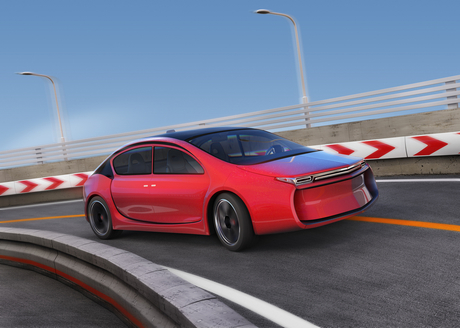Machines learn to respond to new situations like humans

Imagine heading home in your self-driving car. The rain is falling and visibility is poor. All of a sudden, a blurred shape appears on the road.
What would you want the car to do? Should it hit the brakes, at the risk of causing the cars behind you to crash? Or should it just keep driving?
Humans driving in a similar situation will usually be able to tell the difference between a distracted cyclist who is suddenly swerving, for example, or roadside waste swept up by the wind. We may not be sure what the blurred shape actually is, but we know that it looks like a human being rather than a paper bag.
A study by KU Leuven University in Belgium has looked at object recognition in machines and determined that a machine, like a self-driving car that is trained to recognise images, can potentially determine what the unfamiliar shape is — just like a human.
“Current state-of-the-art image recognition technologies are taught to recognise a fixed set of objects,” said Jonas Kubilius, KU Leuven researcher.
“They recognise images using deep neural networks; complex algorithms that perform computations somewhat similarly to the neurons in the human brain.
“We found that deep neural networks are not only good at making objective decisions (‘this is a car’), but also develop human-level sensitivities to object shape (‘this looks like…’).”
In other words, machines can learn to tell us what a new shape — say, a letter from a novel alphabet or a blurred object on the road — reminds them of.
“This means we’re on the right track in developing machines with a visual system and vocabulary as flexible and versatile as ours,” he said.
Does that mean we may soon be able to safely hand over the wheel? Not quite, according to Kubilius.
“We’re not there just yet. And even if machines will at some point be equipped with a visual system as powerful as ours, self-driving cars would still make occasional mistakes — although, unlike human drivers, they wouldn’t be distracted because they’re tired or busy texting,” he said.
“However, even in those rare instances when self-driving cars would err, their decisions would be at least as reasonable as ours.”
Heavy machinery injury lands mining company $750K fine
In WA, an underground mining services company has been fined $750,000 after a drill operator...
Timber company fined $385K after conveyor crushing
In Western Australia, a timber company has been fined $385,000 after a worker's arm became...
Alarming commercial driver fatigue, distraction levels: report
A new report by a technology company has revealed some critical data relating to driver fatigue...










